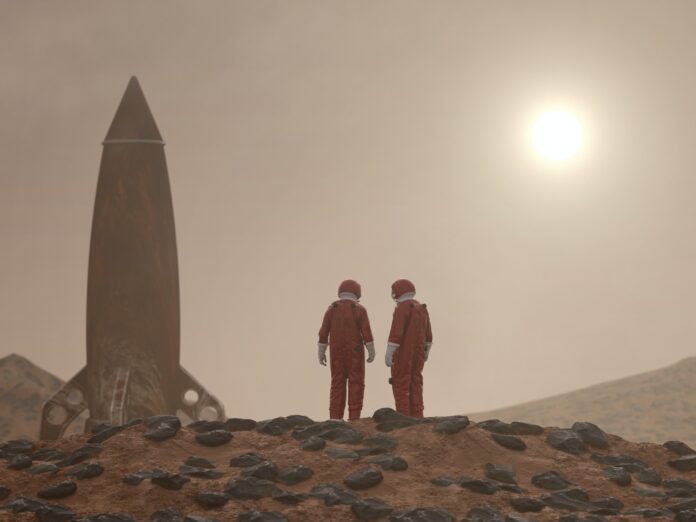Rosetta is an extraordinary space mission launched by the European Space Agency (ESA) on March 2, 2004, with the primary goal of rendezvousing with and studying a comet named 67P/Churyumov-Gerasimenko. This ambitious mission was aptly named after the Rosetta Stone, an ancient Egyptian artifact that played a pivotal role in deciphering hieroglyphics and unlocking the mysteries of the past. In a similar vein, the Rosetta mission aimed to unlock the secrets of comets, which are believed to be remnants from the early stages of the solar system’s formation.
Rosetta, Rosetta, Rosetta—the name resonates with the spirit of exploration and scientific curiosity that embodies this groundbreaking mission. The mission was a result of decades of planning and preparation, involving collaboration between numerous international partners, including scientists, engineers, and technicians from across Europe. It represented a triumph of human ingenuity and perseverance, pushing the boundaries of space exploration and paving the way for new discoveries.
The journey of Rosetta began with its launch from the European spaceport in Kourou, French Guiana, aboard an Ariane 5 rocket. The spacecraft embarked on a ten-year odyssey through the solar system, utilizing gravity assists from Earth and Mars to gain momentum and adjust its trajectory. This intricate trajectory allowed Rosetta to traverse vast distances while conserving fuel, ultimately bringing it within reach of its target, Comet 67P/Churyumov-Gerasimenko.
After years of traversing the depths of space, Rosetta entered a deep sleep mode in 2011 to conserve energy during the most distant and uneventful leg of its journey. In January 2014, it finally awoke from its slumber as it approached the comet, ready to begin its historic rendezvous. The awakening of Rosetta marked a significant milestone, as it demonstrated the successful implementation of advanced hibernation technology—a first for deep-space missions.
As Rosetta neared the comet, it executed a series of intricate maneuvers to match the comet’s speed and trajectory. This delicate dance involved firing its thrusters with precise timing and duration, allowing it to gradually reduce its relative velocity and establish a stable orbit around the comet. This close proximity would provide an unprecedented opportunity to study the comet in detail, capturing high-resolution images and gathering data about its composition, structure, and behavior.
Once in orbit, Rosetta commenced its scientific investigations, utilizing an impressive suite of instruments to unravel the mysteries of the comet. The spacecraft was equipped with an array of cameras, spectrometers, and sensors, each designed to provide unique insights into the comet’s characteristics. The primary objective was to gain a comprehensive understanding of the comet’s nucleus—a solid, icy body often referred to as a “dirty snowball.”
Rosetta’s scientific payload included the OSIRIS camera, which captured breathtaking images of the comet’s surface with unprecedented clarity and detail. These images revealed a world of contrasting terrains, with rugged cliffs, boulders, and crevices carved by eons of solar wind and outgassing. The images also showcased the comet’s curious shape—a bilobed structure resembling a rubber duck—earning the comet the nickname “Rubber Duckie.”
Another critical instrument aboard Rosetta was the VIRTIS spectrometer, which measured the comet’s thermal and infrared emission. By analyzing the emitted light across a broad spectrum, VIRTIS provided valuable data on the composition of the comet’s surface, including the presence of various organic molecules. This information shed light on the chemical processes occurring on the comet and offered tantalizing clues about the role comets may have played in delivering water and complex organic compounds to Earth billions of years ago.
MIRO (Microwave Instrument for the Rosetta Orbiter), which examined the comet’s nucleus using microwave frequencies. MIRO’s main objective was to measure the temperature and composition of the comet’s surface and subsurface layers. By studying the way microwave radiation interacted with the comet’s material, MIRO provided insights into the distribution of water ice and other volatile compounds within the nucleus.
Another instrument of great significance was the CONSERT (Comet Nucleus Sounding Experiment by Radiowave Transmission) instrument. CONSERT utilized radio waves to probe the internal structure of the comet’s nucleus. It worked by sending radio signals between the Rosetta spacecraft and a lander called Philae, which was deployed onto the surface of the comet. By analyzing the signals that were reflected and refracted within the nucleus, scientists were able to map its internal layers and gain insights into its density, porosity, and overall composition.
Additionally, Rosetta carried the ROSINA (Rosetta Orbiter Spectrometer for Ion and Neutral Analysis) instrument, which focused on studying the composition of the comet’s atmosphere, or coma. ROSINA analyzed the gases and ions surrounding the comet, helping scientists understand the chemical composition and evolution of the coma as the comet approached the Sun. It detected a wide range of volatile species, including water vapor, carbon dioxide, and complex organic molecules, providing crucial information about the processes occurring on the comet’s surface.
The lander Philae, carried by Rosetta, played a pivotal role in the mission. On November 12, 2014, Philae successfully separated from Rosetta and descended to the surface of Comet 67P. It was the first time in history that a spacecraft had landed on a comet. Philae’s landing, however, did not go as planned. Due to a malfunctioning harpoon system and low-gravity conditions on the comet, it bounced twice before finally settling in a location with limited sunlight. This prevented Philae’s solar panels from receiving sufficient power, resulting in a premature end to its mission after only a few days.
Nevertheless, Philae’s short-lived adventure provided valuable data. It conducted several experiments, including drilling into the comet’s surface and analyzing samples with onboard instruments. The findings revealed the presence of organic molecules and complex carbon-based compounds, reinforcing the idea that comets may have played a role in seeding life on Earth. Philae’s successful landing and subsequent scientific operations on a comet were monumental achievements, pushing the boundaries of space exploration and inspiring future missions.
Rosetta’s long-term observations of Comet 67P also yielded significant discoveries about the dynamic nature of comets. As the comet approached the Sun, solar radiation caused the nucleus to heat up, initiating a process known as outgassing. This released gas and dust particles from the comet’s surface, creating a magnificent coma and tail that stretched for millions of kilometers. Rosetta’s instruments tracked these changes, providing invaluable insights into the mechanisms behind comet activity and the ways in which comets evolve over time.
In addition to its scientific endeavors, Rosetta also captured the world’s imagination with its stunning imagery. The spacecraft’s cameras documented the breathtaking landscapes of Comet 67P, unveiling a world of unique and otherworldly beauty. These images, with their intricate details and dramatic landscapes, offered a rare glimpse into the hidden corners of the solar system and fueled our sense of wonder and exploration.
After more than a decade of remarkable achievements, the Rosetta mission came to an end on September 30, 2016. With its fuel reserves depleted and the comet moving away from the Sun, Rosetta was commanded to perform a controlled descent onto the comet’s surface. This final act was a fitting conclusion to the mission, allowing Rosetta to continue gathering data until the very end.
The legacy of Rosetta extends far beyond its operational lifetime. The mission revolutionized our understanding of comets and provided a wealth of data that continues to be analyzed and studied by scientists worldwide. The findings from Rosetta have had a profound impact on multiple areas of research, ranging from planetary science and astrophysics to the origins of life on Earth.
One of the most significant contributions of the Rosetta mission was its role in unraveling the mysteries surrounding the formation and evolution of the solar system. Comets are considered pristine remnants from the early stages of the solar system’s history, and studying them provides valuable insights into the conditions and processes that led to the formation of planets and other celestial bodies. By analyzing the composition and structure of Comet 67P, Rosetta helped scientists piece together a more comprehensive picture of the early solar system and the materials from which it emerged.
The data collected by Rosetta also shed light on the origin of water on Earth. Water is a fundamental ingredient for the development and sustenance of life, and understanding its source is crucial for our understanding of habitability in the universe. Comets are believed to contain vast amounts of water ice, and Rosetta’s measurements confirmed that Comet 67P indeed carried a significant quantity of water. This finding supports the theory that comets played a vital role in delivering water to our planet during its formative stages.
Moreover, the mission’s discoveries regarding organic molecules and complex carbon-based compounds on Comet 67P have implications for the field of astrobiology. These molecules are the building blocks of life as we know it, and their presence on comets suggests that these celestial bodies may have acted as “chemical factories” that supplied the early Earth with the necessary ingredients for life’s emergence. Rosetta’s findings have bolstered the hypothesis that comets played a critical role in the origin of life on our planet.
The engineering accomplishments of the Rosetta mission should not be overlooked either. The successful execution of complex maneuvers, including the precise matching of velocities and the establishment of a stable orbit around a fast-moving comet, demonstrated the incredible precision and accuracy of the spacecraft’s navigation systems. Additionally, the innovative hibernation technology employed by Rosetta during its long journey through space proved to be a valuable asset for conserving energy and extending the mission’s duration.
The Rosetta mission also had a significant impact on public engagement and outreach. The mission captured the public’s imagination and generated widespread interest in space exploration and scientific discovery. The stunning images and captivating stories shared by the mission team brought the wonders of the universe closer to people’s hearts and inspired a new generation of scientists, engineers, and space enthusiasts. Rosetta demonstrated the power of space missions to ignite curiosity and foster a deeper appreciation for our place in the cosmos.
In conclusion, the Rosetta mission represents a remarkable achievement in space exploration. From its launch to its controlled descent onto the surface of Comet 67P, Rosetta pushed the boundaries of human knowledge and opened up new avenues of scientific inquiry. Its findings have revolutionized our understanding of comets, the solar system, and the origins of life. The mission serves as a testament to the power of international collaboration, human ingenuity, and the insatiable curiosity that drives us to explore the unknown. Rosetta will forever be remembered as a pioneering mission that expanded our horizons and brought us closer to unraveling the mysteries of our cosmic origins.


















